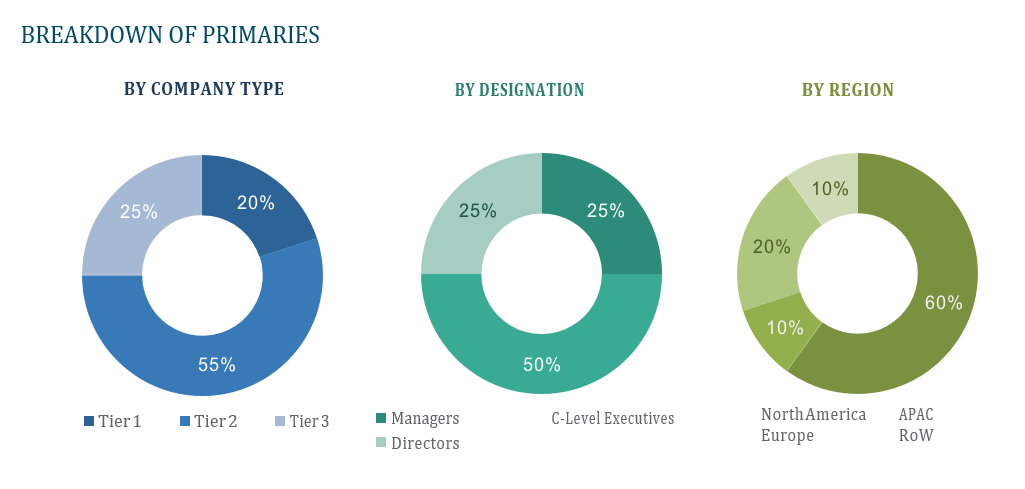OVERVIEW
The Over the Top (OTT) Market is currently valued at USD 0.5 trillion in 2024 and will be growing at a CAGR of 28.19% over the forecast period to reach an estimated USD 1.99 trillion in revenue in 2029. The over-the-top (OTT) market is a dynamic and rapidly evolving sector within the entertainment and media industry. OTT services deliver video, audio, and other media content directly to consumers over the internet, bypassing traditional distribution channels like cable or satellite television. This model offers viewers unprecedented flexibility, allowing them to access content on-demand, anytime, and anywhere, often at a fraction of the cost of traditional subscription services. With a wide array of offerings ranging from subscription-based platforms like Netflix and Hulu to ad-supported services like YouTube, the OTT market is fiercely competitive, driving innovation in content creation, user experience, and technology. The proliferation of smart devices, increasing internet penetration, and shifting consumer preferences towards personalized, on-the-go entertainment experiences continue to fuel the growth of this vibrant ecosystem.
The proliferation of high-speed internet connectivity and the widespread adoption of smartphones, tablets, and smart TVs have significantly expanded the potential audience for OTT services, enabling seamless access to content anytime and anywhere. Additionally, the increasing consumer preference for on-demand and personalized content experiences has propelled the demand for OTT platforms, which offer a vast library of content catering to diverse tastes and interests. Furthermore, the rise of original content production by OTT players has disrupted traditional media landscapes, attracting subscribers with exclusive and compelling programming. Moreover, the flexibility and affordability of OTT services compared to traditional cable or satellite subscriptions have made them increasingly appealing to cost-conscious consumers. Finally, advancements in technology, such as cloud computing, artificial intelligence, and improved streaming protocols, continue to enhance the quality and accessibility of OTT content, driving further adoption and innovation in the market. These combined factors contribute to the continued expansion and evolution of the OTT industry globally.
Table of Content
Market Dynamics
Drivers:
The proliferation of high-speed internet connectivity and the widespread adoption of smartphones, tablets, and smart TVs have significantly expanded the potential audience for OTT services, enabling seamless access to content anytime and anywhere. Additionally, the increasing consumer preference for on-demand and personalized content experiences has propelled the demand for OTT platforms, which offer a vast library of content catering to diverse tastes and interests. Furthermore, the rise of original content production by OTT players has disrupted traditional media landscapes, attracting subscribers with exclusive and compelling programming. Moreover, the flexibility and affordability of OTT services compared to traditional cable or satellite subscriptions have made them increasingly appealing to cost-conscious consumers. Finally, advancements in technology, such as cloud computing, artificial intelligence, and improved streaming protocols, continue to enhance the quality and accessibility of OTT content, driving further adoption and innovation in the market. These combined factors contribute to the continued expansion and evolution of the OTT industry globally.
Key Offerings:
The key offerings in the OTT market encompass a diverse range of services and features tailored to meet the evolving needs and preferences of consumers. Firstly, subscription-based streaming platforms such as Netflix, Amazon Prime Video, and Disney+ offer vast libraries of on-demand movies, TV shows, documentaries, and original content accessible for a monthly fee. These platforms often provide personalized recommendations and advanced features like offline viewing and multiple user profiles to enhance the user experience. Additionally, ad-supported streaming services like YouTube and Hulu offer a mix of free and premium content, supported by advertising revenue, appealing to budget-conscious viewers. Furthermore, live TV streaming services such as Sling TV and Hulu + Live TV provide subscribers with access to live sports, news, and entertainment channels over the internet, offering a viable alternative to traditional cable or satellite TV subscriptions. Moreover, niche-focused OTT platforms catering to specific genres or interests, such as Crunchyroll for anime enthusiasts or WWE Network for wrestling fans, offer curated content experiences tailored to niche audiences.
Restraints :
The over-the-top (OTT) business is seeing fast growth and popularity, but it is facing various obstacles that could hinder its future development. One major deterrent is the continued disarray of licencing contracts and content rights, which has resulted in the emergence of numerous streaming services and customer subscription fatigue. This problem is made more difficult for users to access with a single subscription by the rise of exclusive content arrangements between OTT platforms and content publishers. The inability of the business to fully capitalise on its expanding audience is further hampered by the absence of common measurement criteria for OTT viewership and advertising efficiency, which makes monetization plans for advertisers and content creators more difficult. Furthermore, regulatory scrutiny has intensified due to worries about data privacy and security in the digital streaming ecosystem. This could provide issues for compliance and result in higher operating expenses for over-the-top (OTT) service providers. Furthermore, the income streams of reputable OTT platforms are threatened by the constant technological developments in content and anti-piracy piracy, which makes continual investments in DRM and anti-piracy measures imperative. Last but not least, the emergence of their own OTT services by major media conglomerates has increased rivalry in the market and increased entrance hurdles for smaller firms, which may have the effect of stifling innovation and diversity in the OTT space. To maintain the growth and profitability of the OTT market in the face of these constraints, industry players need to successfully negotiate a challenging regulatory, technological, and commercial environment.
Regional Information:
• In North America, the OTT market continues to thrive, driven by widespread high-speed internet access and a tech-savvy population. Subscription-based streaming giants like Netflix, Amazon Prime Video, and Disney+ dominate the landscape, offering a vast array of on-demand content and original programming. Live TV streaming services such as Hulu + Live TV and YouTube TV are also popular choices, providing access to live sports and news channels. However, the market faces challenges from increasing subscription fatigue as consumers are overwhelmed by the growing number of streaming options. Additionally, regulatory scrutiny over data privacy and content censorship poses compliance challenges for OTT platforms, necessitating careful navigation of regional regulations. Despite these challenges, the North American OTT market remains a hotbed of innovation and competition, with content creators and service providers continuously striving to capture the attention of discerning viewers.
• In Europe, the OTT market is characterized by a diverse landscape of streaming services catering to varied linguistic and cultural preferences across different countries. While international players like Netflix and Amazon Prime Video maintain a strong presence, local players such as Sky Go in the UK, Canal+ in France, and Mediaset Infinity in Italy also command significant market share with their regionally tailored content offerings. Regulatory frameworks, such as the European Union’s Audiovisual Media Services Directive, play a crucial role in shaping the competitive landscape and ensuring compliance with regional content standards. Despite the regulatory complexities, the European OTT market presents lucrative opportunities for content creators and distributors, particularly as consumer demand for high-quality, localized content continues to rise.
• In Asia-Pacific, the OTT market is witnessing explosive growth fueled by the region’s burgeoning internet penetration and smartphone adoption rates. Homegrown OTT platforms like iQIYI in China, Hotstar in India, and HOOQ in Southeast Asia are capturing the attention of millions of subscribers with their extensive libraries of regional content, including movies, dramas, and live sports. The diversity of languages and cultures within the region presents both opportunities and challenges for OTT service providers, who must navigate linguistic and regulatory barriers to effectively penetrate local markets. Additionally, the increasing prevalence of mobile payment systems and affordable data plans is driving the proliferation of subscription-based and ad-supported OTT services, making digital entertainment more accessible to a wider audience than ever before. Despite the immense potential, the Asia-Pacific OTT market is highly competitive, with both local and international players vying for dominance in this rapidly evolving landscape.
Recent Developments:
• May 2023 – Jio Fibre and OTTplay Premium have collaborated to provide 19 OTTs to Jio Set-Top Box consumers. OTTplay Premium is well-known for its high-quality and varied content, designed to give users a personalized, smooth, and premium streaming experience. With this connection, Jio set-top box customers could download the OTTplay app from the Jio Store and access prominent OTT platforms like Sony Liv, Zee5, Lionsgate, FanCode, and 15 more, all under one roof.
• October 2022 – Vislink has announced and introduced a new integrated collaboration with sports OTT provider StreamViral as part of their exhibition at Sportel 2022 in Monaco. Vislink, a significant broadcast live streaming production technology provider, is now delivering an OTT playout and distribution platform to complement its Artificial Intelligence (AI) cameras, which can generate captivating sports productions without using live camera operators.
Key Players:
Netflix, Amazon Prime Video, Hulu, Disney+, Sky Go, Canal+, Mediaset Infinity, BBC iPlayer, iQIYI, Hotstar, HOOQ, and Viu.
1) What is the projected market value of the Over the Top (OTT) Market?
– The Over the Top (OTT) Market is expected to reach an estimated value of USD 1.99 trillion in revenue by 2029.
2) What is the estimated CAGR of the Over the Top (OTT) Market over the 2024 to 2029 forecast period?
– The CAGR is estimated to be 28.19% for the Over the Top (OTT) Market over the 2024 to 2029.
3) Who are the key players in the Over the Top (OTT) Market?
– Netflix, Amazon Prime Video, Hulu, Disney+, Sky Go, Canal+, Mediaset Infinity, BBC iPlayer, iQIYI, Hotstar, HOOQ, and Viu.
4) What are the drivers for the Over the Top (OTT) Market?
– The rise of high-speed internet connectivity and smartphones has expanded the audience for OTT services, offering on-demand content. Consumer preference for personalized experiences and original content has disrupted traditional media. OTT services are flexible, affordable, and enhanced by advancements in technology like cloud computing and artificial intelligence, driving market growth and innovation.
5) What are the restraints and challenges in the Over the Top (OTT) Market?
– The over-the-top (OTT) industry is experiencing rapid growth, but faces challenges such as licensing contracts, content rights, exclusive content arrangements, and lack of common measurement criteria. Regulatory scrutiny over data privacy and security, technological developments, and anti-piracy measures threaten income streams for reputable platforms. Major media conglomerates’ OTT services have increased rivalry and entrance hurdles for smaller firms, potentially stifling innovation and diversity. To maintain growth and profitability, industry players must successfully navigate a challenging regulatory, technological, and commercial environment.
6) What are the key applications and offerings of the Over the Top (OTT) Market?
– The OTT market offers various services to meet consumer needs. Subscription-based platforms like Netflix, Amazon Prime Video, and Disney+ provide on-demand content, personalized recommendations, and advanced features. Ad-supported platforms like YouTube and Hulu offer free and premium content, while live TV services like Sling TV and Hulu + Live TV provide live sports and news. Niche-focused platforms cater to specific genres or interests.
7) Which region is expected to drive the market for the forecast period?
– North America is expected to have the highest market growth from 2024 to 2029
Why Choose Us?
Insights into Market Trends: Global Market Studies reports provide valuable insights into market trends, including market size, segmentation, growth drivers, and market dynamics. This information helps clients make strategic decisions, such as product development, market positioning, and marketing strategies.
Competitor Analysis: Our reports provide detailed information about competitors, including their market share, product offerings, pricing, and competitive strategies. This data can be used to inform competitive strategies and to identify opportunities for growth and expansion.
Industry Forecasts: Our reports provide industry forecasts, which will inform your business strategies, such as investment decisions, production planning, and workforce planning. These forecasts can help you to prepare for future trends and to take advantage of growth opportunities.
Access to Industry Experts: Our solutions include contributions from industry experts, including analysts, consultants, and subject matter experts. This access to expert insights can be valuable for you to understand the market.
Time and Cost Savings: Our team at Global Market Studies can save you time and reduce the cost of conducting market research by providing comprehensive and up-to-date information in a single report, avoiding the need for additional market research efforts.









